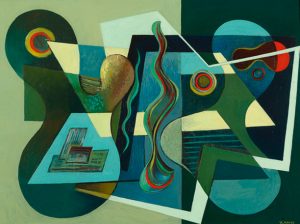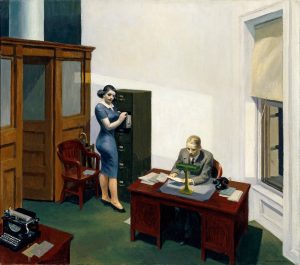The react to the past game was a very fun experience and one I think deserves to be offered to many more students. The game does need a few tweaks so it runs more smoothly, like ensuring necessary details are known to all who need the information. Still, our game sessions were overall straightforward and enlightening.
Throughout much of art history, there is a significant focus on an elite few dictating the rules of art. For instance, the Classical art style was highly praised by an Academy, which constructed a hierarchy of genres in art. Regardless, rules on how to apply paint, how to use color, and how to compose a work of art were present throughout the genres of art. Similar high expectations were placed on artists during the 1930s by the elite class, as well. But not only were artists expected to cater toward these preferences if they wanted to achieve success, they were also limited by the possible drawbacks of exercising free political speech in art. Regionalists and Social Realists had to be particularly careful because they created representative works of art, which was favored by the privileged class. However, Abstractionists would compete against these artists holding the belief that, while Abstractionism strays from the styles of art that receive the highest praise, it is void of personal bias and exclusivity.
Many artists from all three movements could, however, agree that their art could be powerful tools to fight Fascism, the common enemy of the right to free artistic expression. Consequently, artists had to balance the need to surpass their competitors and obtain success with the value in uniting for a cause that could benefit the entire art world. The art community today is still both highly competitive and supportive, but I believe our contemporary society is more privileged than America was eighty years ago. Censorship is not so pressing a concern and diversity in art is embraced far more. Because contemporary art is almost timeless due to its historical influences and rapidly evolving state, there appears to be no desperation to define this period of American art, except perhaps among art historians. What has not changed from the 1930s, though, is that artists still must be aware of their audiences and must be wise about how they put their art out in the world, especially if their works contain strong persuasive messages. Art is powerful and beautiful, but it is not welcome with open arms by all, whether it is the style or the message that serves as one’s “make-or-break.”




